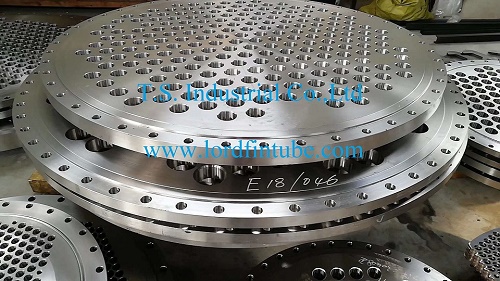Lord Fin Tube--Tubesheet or tube sheet
Is tubesheet the same as tube sheet?
Yes, A tube sheet, also known as a tubesheet, is a plate that is used to support and hold the tubes in a heat exchanger or a boiler. It is an important component of shell and tube heat exchangers, which are commonly used in various industrial applications.
The tube sheet is typically made of a high-strength material, such as stainless steel, carbon steel, or copper, and is drilled with holes where the tubes are inserted. The tube sheet serves to provide a secure and stable platform for the tubes, preventing them from moving or vibrating during operation.
The tubesheet also serves as a sealing surface between the shell side and tube side of the heat exchanger, ensuring that the fluid does not leak from one side to the other. To achieve this, the tubes are expanded or welded to the tube sheet to create a tight seal.
The design of the tube sheet is critical to the overall performance of the heat exchanger. It must be able to withstand the pressure and temperature of the fluid flowing through the heat exchanger, as well as any mechanical stresses caused by the movement of the tubes. It is also important that the tube sheet is designed to facilitate the cleaning and maintenance of the heat exchanger.
Overall, the tube sheet is a critical component of a shell and tube heat exchanger, providing support for the tubes, ensuring a tight seal, and facilitating the efficient transfer of heat between the fluids.
Here are some additional details about tube sheets:
1. Tube Sheet Material Selection: The material used to make the tube sheet depends on the application requirements, such as the temperature and pressure of the fluid, the type of fluid being used, and the corrosive nature of the fluid. Common materials include stainless steel, carbon steel, copper, and titanium.
2. Tube Sheet Hole Pattern: The pattern of the holes in the tube sheet can affect the performance of the heat exchanger. The holes must be arranged in a way that maximizes the heat transfer efficiency while also ensuring that there is enough space between the tubes to allow for proper fluid flow.
3. Tube Sheet Thickness: The thickness of the tube sheet is important for ensuring that it can withstand the pressure and temperature of the fluid. The thickness is typically determined based on the material used and the design specifications of the heat exchanger.
4. Tube Sheet Fabrication: Tube sheets are typically fabricated using a variety of methods, such as drilling, punching, or laser cutting. The method used depends on the material being used, the hole pattern required, and the design specifications of the heat exchanger.
5. Tube Sheet Maintenance: Tube sheets require regular maintenance to ensure that they continue to function properly. This may include cleaning, inspection, and repair or replacement of any damaged or corroded areas.
Overall, the tube sheet is a critical component of a shell and tube heat exchanger, and its design and fabrication must be carefully considered to ensure that it provides proper support for the tubes and facilitates efficient heat transfer. Regular maintenance is also important to ensure that the tube sheet continues to function properly over time.


